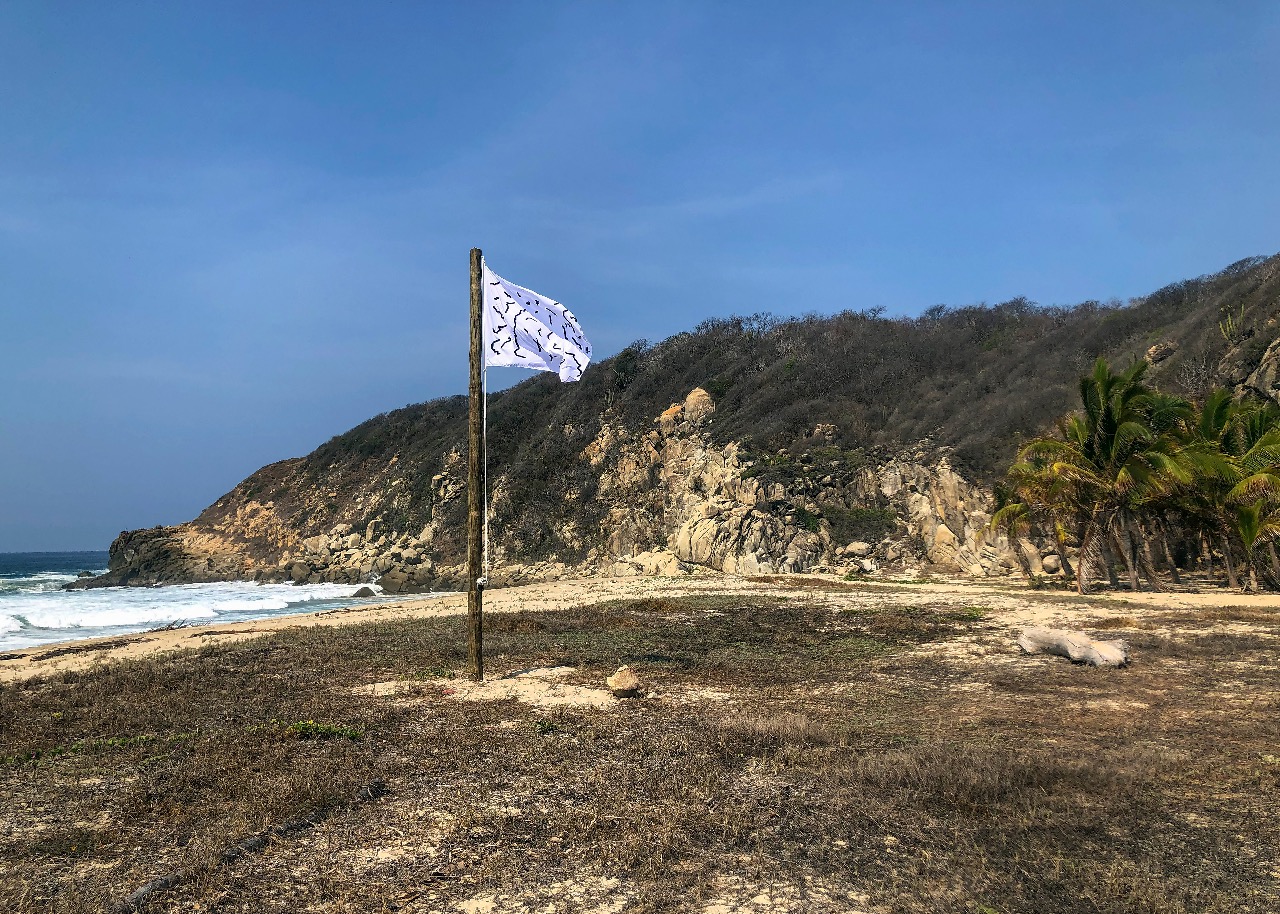


Sailing winds
“How many terrible things could the wind-from-the-clouds dissolve”
João Guimarães Rosa, Grande Sertão: Veredas
There’s always some distance (as short as they are deep) between the idealization of a new work, its conceptual research process, its materialization procedures, and the final result. “Ode to the Wind” is a project about a relentless force of nature. It is about working together with the breeze, not as an obstacle or a hindrance, but as a kind of co-author, incorporating its potentials. This is a work about drawings and lines (lines that are, actually, infinite points). This is a work about time, as it resides in the unpredictability of the elements, in the spontaneity of matter, in the lack of control. This is also a work about borders: geographic parameters for political, social and economic human organization; they mediate and control displacements, instigate and escalate conflict, delineate and conform identities, as well as being landscapes – following rivers and mountain ranges, seasides and woods.
Mano Penalva’s new piece emerged as a response to an invitation to create an intervention for a beach in the Pacific Mexican coast. The project started, initially, with the questions and issues that the installation context raised, in consonance with the artist’s broader ongoing investigations. On one hand, the concept of Latin America in contrast with the notions of global North-South divide – a conflict between geographic and geo-political borders, developed under post-colonial studies – rekindled questions about patriotism and regional identity, with specific connection to Brazil, and more comprehensively to the rest of the continent, beyond identitarian movements. On the other hand, reflections surfaced around the meaning of intervening in a space located in a country with so many layers of conflict and tension, especially involving the frontier with the United States.
Thus, Penalva conceive “Ode to the Wind I”, a flag – an element of considerable symbolic weight in the ideas of territory, power, nationalism, and belonging (as well as separation and xenophobia…) – measuring the standard 112 cm tall by 116cm wide, attached to a 5 meter tall pole, near the sea. Produced in white cloth, it contains the internal borders between all Latin American countries (even within islands, but excluding the coastal ones). The artist transformed the outline of these boundaries in graphic black wool strings, spreading them on the fabric. By not following the real geographic layout, they are fictitiously approximated or, even though they may not physically distant, they demarcate absolutely different experiences. More than an abstraction or an expansion of these perimeters, it is like spilling maps on an empty plane, a clean slate, fabling new territories. Attached to the flag by velcro, the dark stripes seem to float, surrounded on all sides by the bright background, as if they were island-lines, in a great archipelago or constellation.
With time, and the fortuitous action of the wind, the strips will break loose and, little by little, the flag will become bare. With every detachment, a new pictorial composition emerges, still anchored in its previous version. And with every new version, the flag meaning is transformed, in between total whiteness and the original forms. If, in ancient wars and conflicts for land, a flag gained new stripes or stars to symbolize conquered territories, in “Ode to the Wind”, the compositional elements fade away, as if these lines were erased – as if the metaphorical countries and provinces dissolved into the clear fabric.
A secondary outcome of this project is “Ode to the Wind II”, made with the same materials, resources, formats and procedures. However, this second flag contains just one trace, representing the border between Mexico – country that helps delimit what we call Latin America, and where the work is installed – and the United States – a country that, politically, represents the global North. This frontier is the only one not present in the first version of the work, marking its importance in the project’s conceptual features: here, this latinidad isn’t depicted merely as an identity, but as the backdrop for re-elaborations that change flags and borders and the names and attributions we bestow them. The long black thread could fully sever the white plane, but it doesn’t; it floats around without touching any of the margins, as if it were adrift at sea, or a large interrupted topography, equally subordinated to the weather.
It is impossible to predict whether, some day, these flags will become completely inhabited, deserted. The strings that haphazardly break loose will hover and soar away, maybe meeting again in some other place to weave new landscapes, apart from the specific time-space condition that is the empty fabric rectangle – to make them blank again is to, perhaps, create the opportunity for building something new, out of control, where anything is possible, including the future. Nonetheless, they will never forfeit their nature, they will keep on being flags; and, the frontiers, remain being frontiers, even if their traces succumb to the wind, even if their lines are just imaginary.
Text: Julia Lima (March, 2021)
–
Press